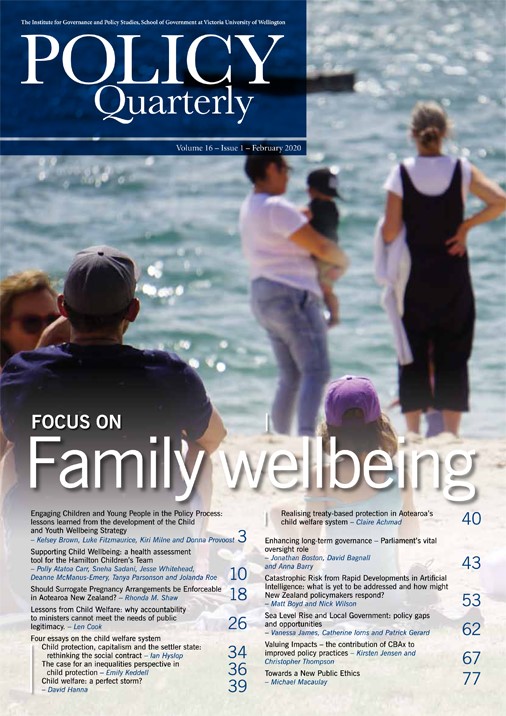Realising treaty-based protection in Aotearoa’s child welfare system
DOI:
https://doi.org/10.26686/pq.v16i1.6457Abstract
The year 2019 represented a watershed moment for Aotearoa New Zealand’s child welfare system, as a public spotlight was shone on systemic ethnic inequities during ongoing legislative changes aimed at centering Te Tiriti o Waitangi and whänau, hapü, and iwi considerations in policy and practice. In the midst of this dialogue, Victoria University of Wellington’s School of Government hosted the “Children, Families, and the State”– a seminar series focused on the historical, current, and future role of the state in the lives of families and children. The seminars, and the discussion it generated, was due to the calls to action from speakers across the system, including leadership at Oranga Tamariki, within the family court, non-profit providers, commissioners and advocates, and academics.
The four brief essays in this edition of Policy Quarterly capture viewpoints from several of the seminar speakers. Despite their different perspectives, common threads unite them. A greater recognition of the structural causes of the historical and current patterns of ethnic inequities in child welfare system contact, a commitment to whänau, hapü, and iwi-centred policy, practice, and partnership, the authors argue, are vital for a more just and empowering system.
In this essay, Claire Achmad discusses how Te Tiriti o Waitangi and the United Nation Convention on the Rights of the Child can be frameworks for policy change aimed at making the child welfare system both child-centred while reducing ethnic inequities.
Downloads
Downloads
Published
Issue
Section
License
Permission: In the interest of promoting debate and wider dissemination, the IGPS encourages use of all or part of the articles appearing in PQ, where there is no element of commercial gain. Appropriate acknowledgement of both author and source should be made in all cases. Please direct requests for permission to reprint articles from this publication to Policy-Quarterly@vuw.ac.nz.



